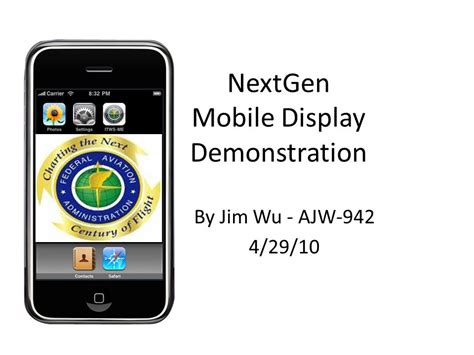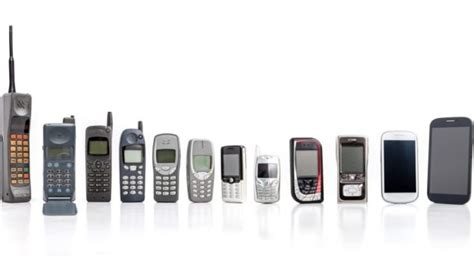NextGen Mobile Revolution

The advent of the NextGen mobile revolution is poised to transform the way we interact, communicate, and access information on the go. With the proliferation of 5G networks, advancements in artificial intelligence (AI), and the Internet of Things (IoT), the mobile landscape is undergoing a significant paradigm shift. As we navigate this new era of mobile technology, it's essential to understand the key drivers, trends, and innovations that are shaping the future of mobile communication.
At the heart of the NextGen mobile revolution is the convergence of multiple technologies, including 5G, AI, and IoT. The deployment of 5G networks promises to deliver unprecedented speeds, lower latency, and greater connectivity, enabling a wide range of applications and services that were previously unimaginable. With 5G, mobile users can expect to experience download speeds of up to 20 Gbps, latency as low as 1 ms, and a significant increase in network capacity. These advancements will pave the way for immersive technologies like augmented reality (AR) and virtual reality (VR), which will revolutionize the way we interact with information and each other.
Key Points
- The NextGen mobile revolution is driven by the convergence of 5G, AI, and IoT technologies.
- 5G networks promise to deliver unprecedented speeds, lower latency, and greater connectivity.
- AI will play a critical role in enabling intelligent mobile networks, devices, and applications.
- IoT will connect billions of devices, enabling new use cases and applications in areas like smart homes, cities, and industries.
- The NextGen mobile revolution will have a significant impact on various industries, including healthcare, finance, and education.
5G Networks: The Foundation of the NextGen Mobile Revolution

The deployment of 5G networks is a critical component of the NextGen mobile revolution. With its promise of unprecedented speeds, lower latency, and greater connectivity, 5G will enable a wide range of applications and services that were previously unimaginable. According to a report by Ericsson, the number of 5G subscribers is expected to reach 2.6 billion by 2025, with 5G networks covering up to 65% of the world’s population. The impact of 5G will be felt across various industries, including healthcare, finance, and education, where it will enable new use cases and applications that require high-speed, low-latency connectivity.
Artificial Intelligence: The Brain of the NextGen Mobile Revolution
Artificial intelligence (AI) will play a critical role in enabling the NextGen mobile revolution. With its ability to analyze vast amounts of data, recognize patterns, and make decisions in real-time, AI will be used to optimize network performance, predict and prevent failures, and provide personalized services to mobile users. According to a report by IDC, the global AI market is expected to reach $190 billion by 2025, with the mobile industry being a significant contributor to this growth. AI will also be used to enable intelligent mobile devices, which will be capable of learning and adapting to user behavior, providing a more personalized and intuitive user experience.
| 5G Network Metrics | Expected Values |
|---|---|
| Download Speed | Up to 20 Gbps |
| Latency | As low as 1 ms |
| Network Capacity | Significant increase in capacity |

Internet of Things: The Nervous System of the NextGen Mobile Revolution

The Internet of Things (IoT) will connect billions of devices, enabling new use cases and applications in areas like smart homes, cities, and industries. With the proliferation of IoT devices, mobile networks will need to support a vast number of connections, which will require significant advancements in network architecture and management. According to a report by Gartner, the number of IoT devices is expected to reach 20.4 billion by 2025, with the mobile industry being a significant contributor to this growth. The integration of IoT and 5G will enable a wide range of applications, including smart cities, industrial automation, and remote healthcare.
Security and Privacy: Critical Considerations for the NextGen Mobile Revolution
As the NextGen mobile revolution gains momentum, security and privacy will become critical considerations. With the proliferation of IoT devices and the increased use of AI, mobile networks will be vulnerable to new types of threats and attacks. According to a report by Cybersecurity Ventures, the global cybersecurity market is expected to reach $300 billion by 2025, with the mobile industry being a significant contributor to this growth. Mobile operators and device manufacturers will need to prioritize security and privacy, implementing robust measures to protect user data and prevent unauthorized access to mobile networks and devices.
What are the key drivers of the NextGen mobile revolution?
+The key drivers of the NextGen mobile revolution are the convergence of 5G, AI, and IoT technologies.
What are the expected benefits of 5G networks?
+The expected benefits of 5G networks include unprecedented speeds, lower latency, and greater connectivity.
How will AI be used in the NextGen mobile revolution?
+AI will be used to optimize network performance, predict and prevent failures, and provide personalized services to mobile users.
In conclusion, the NextGen mobile revolution is a transformative force that will reshape the way we interact, communicate, and access information on the go. With its promise of unprecedented speeds, lower latency, and greater connectivity, 5G will enable a wide range of applications and services that were previously unimaginable. The integration of AI and IoT will enable intelligent mobile networks, devices, and applications, which will revolutionize the way we live, work, and play. As we navigate this new era of mobile technology, it's essential to prioritize security and privacy, implementing robust measures to protect user data and prevent unauthorized access to mobile networks and devices.
Meta description suggestion: “Discover the NextGen mobile revolution and its impact on the future of mobile communication. Learn about the key drivers, trends, and innovations shaping the mobile landscape.” (148 characters)



